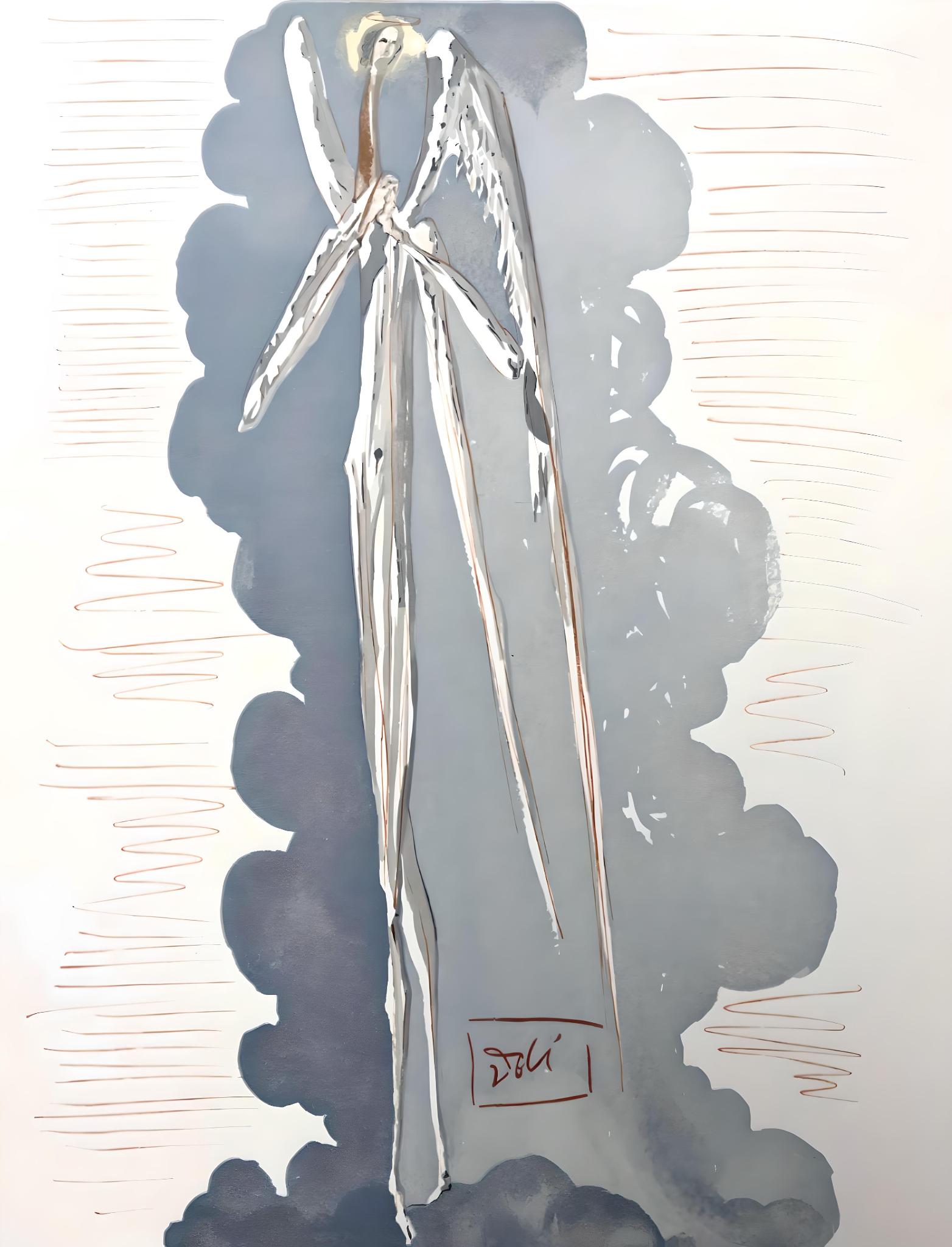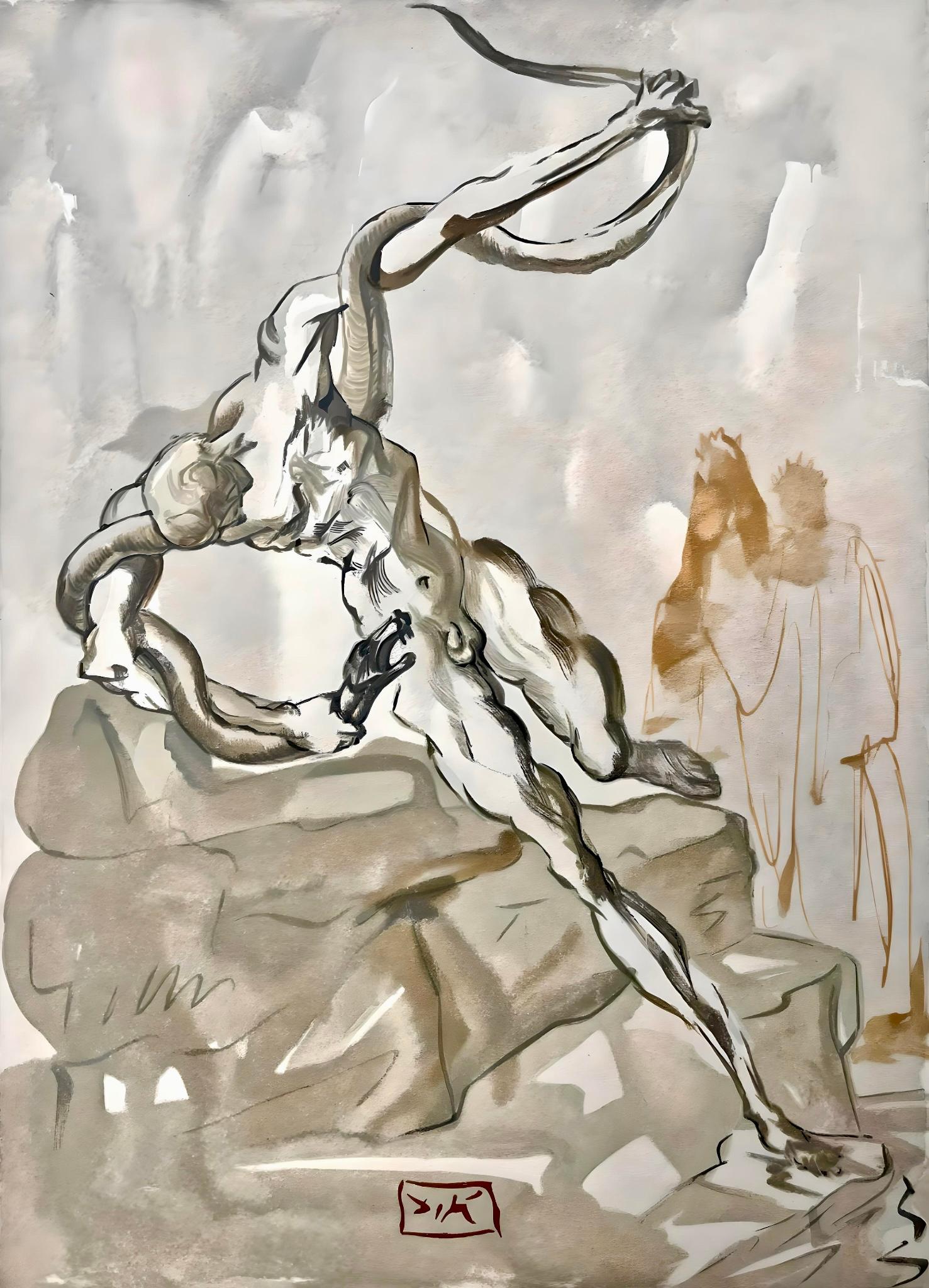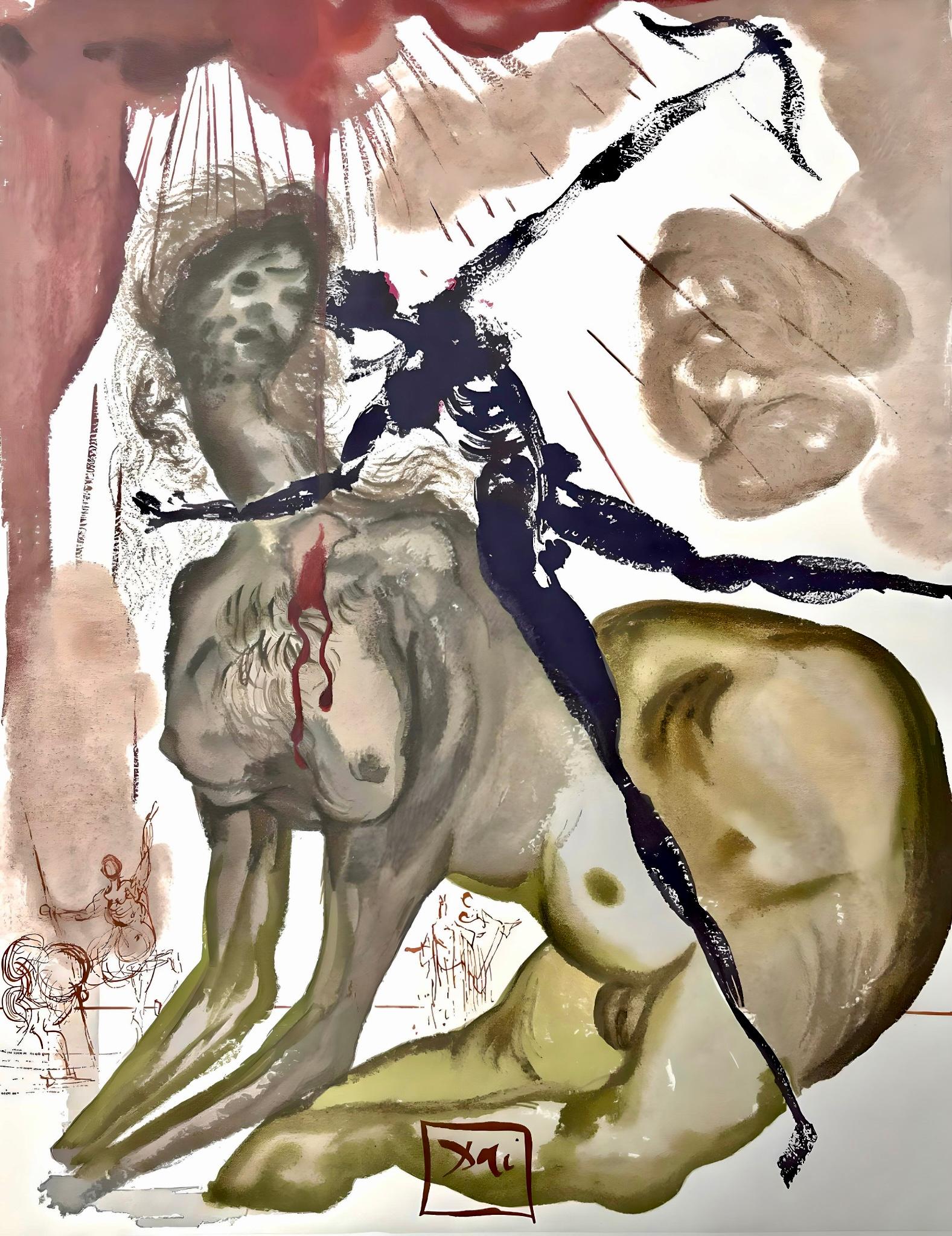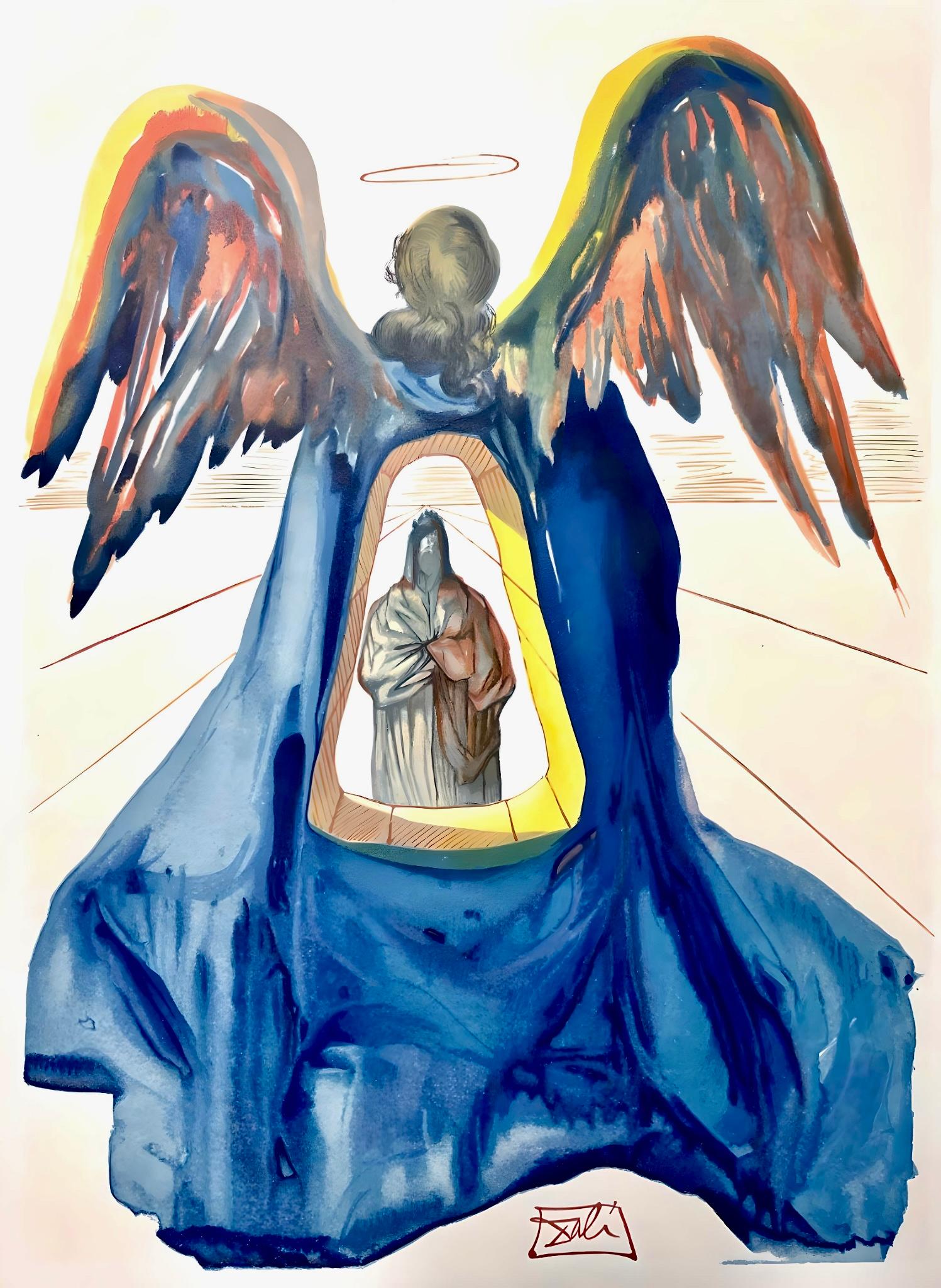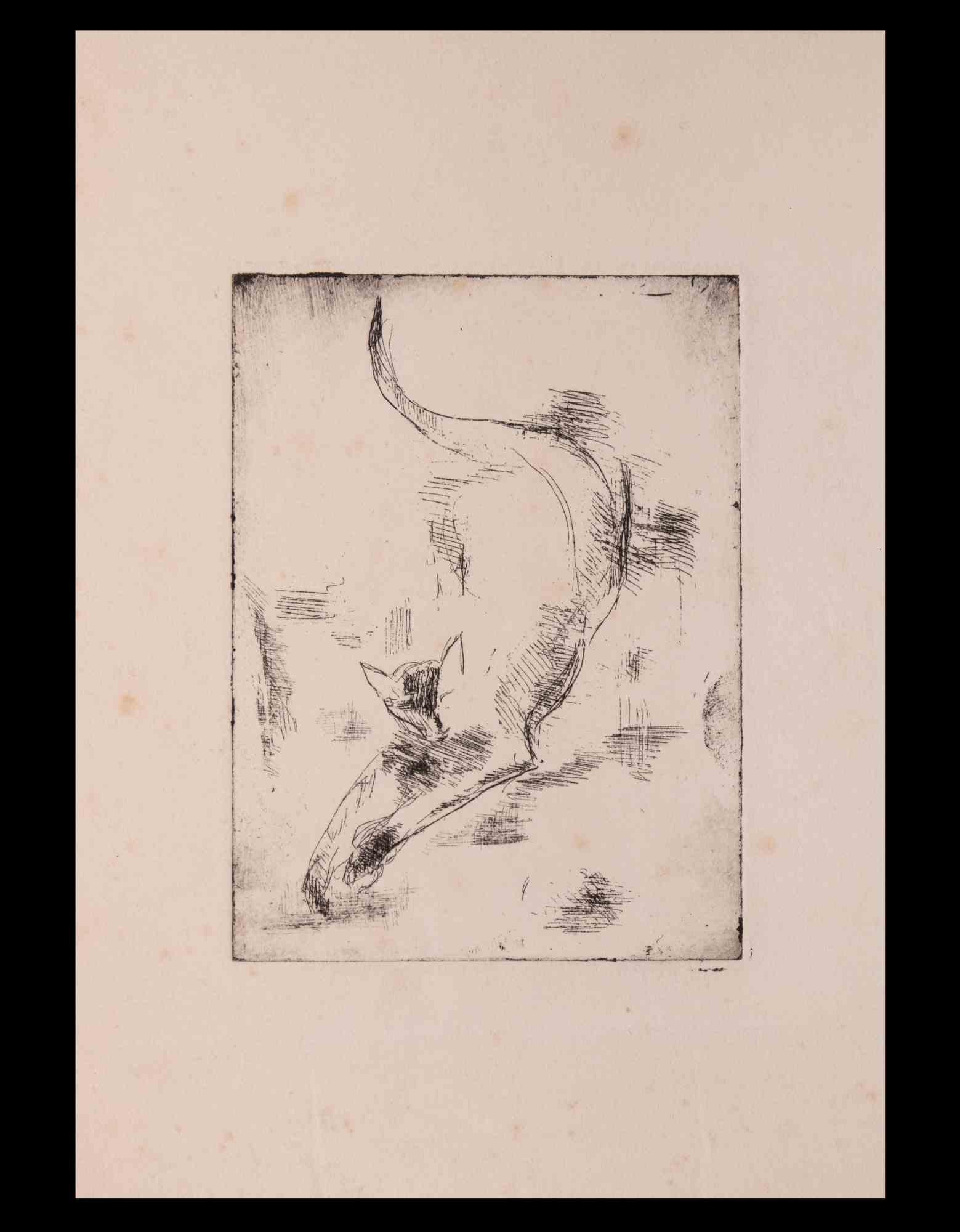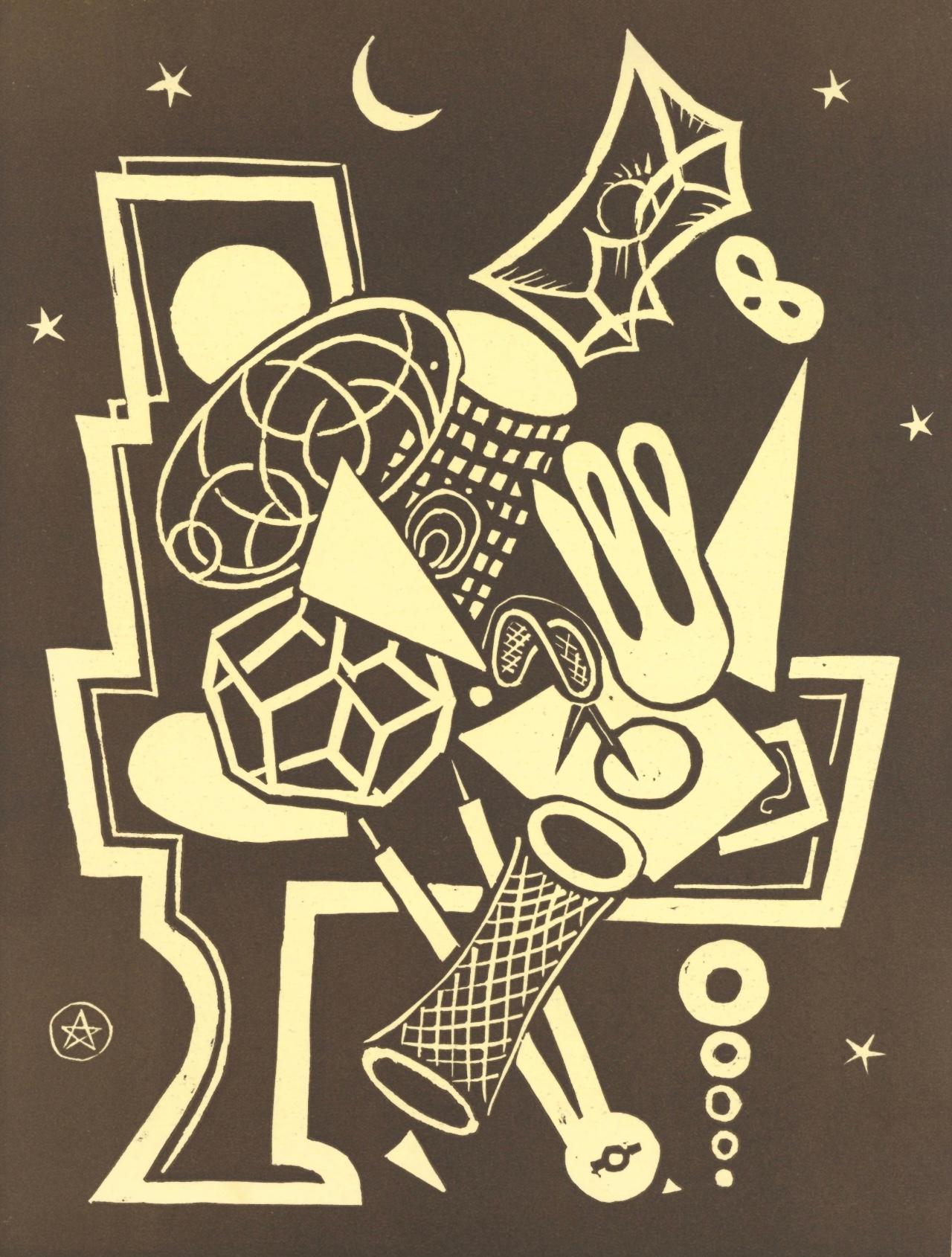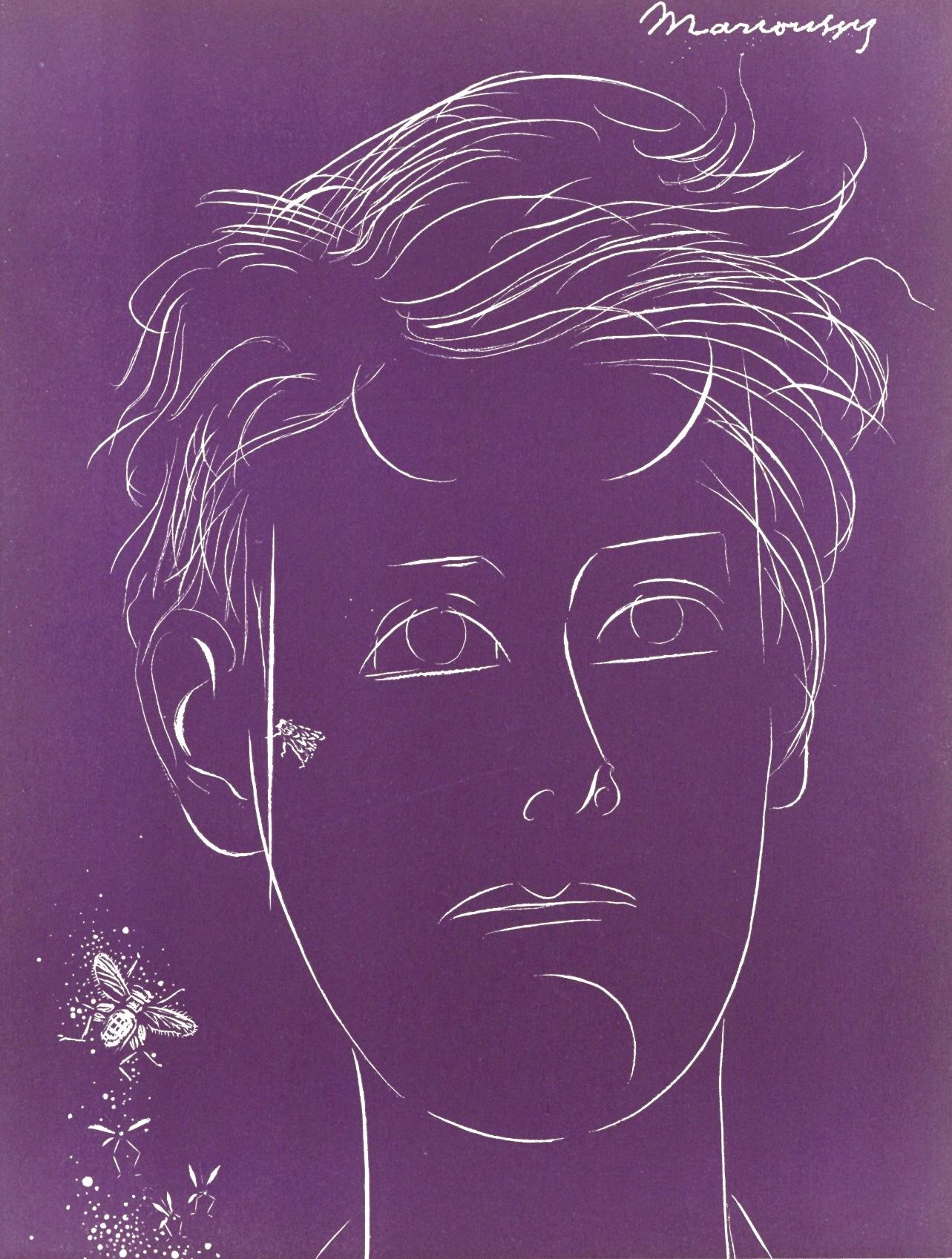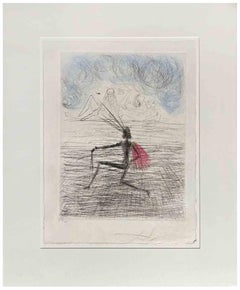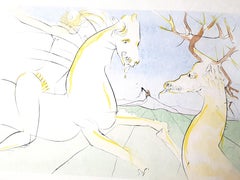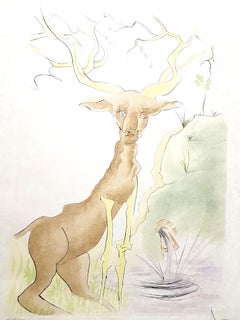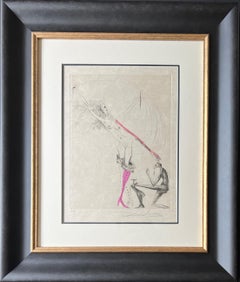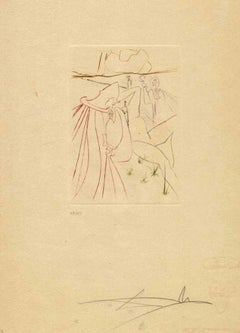
La Resussuscité - Original Etching attr. to Salvador Dalì - 1972
View Similar Items
Want more images or videos?
Request additional images or videos from the seller
1 of 5
Auction endedBrowse Current Auctions
La Resussuscité - Original Etching attr. to Salvador Dalì - 19721972
1972
About the Item
- Attributed to:Salvador Dalí (1904 - 1989, Spanish)
- Creation Year:1972
- Dimensions:Height: 17.92 in (45.5 cm)Width: 12.41 in (31.5 cm)Depth: 0.04 in (1 mm)
- Medium:
- Movement & Style:
- Period:
- Framing:Framing Options Available
- Condition:Insurance may be requested by customers as additional service, contact us for more information.
- Gallery Location:Roma, IT
- Reference Number:Seller: T-1210411stDibs: LU65038391402
About the Seller
4.9
Platinum Seller
These expertly vetted sellers are 1stDibs' most experienced sellers and are rated highest by our customers.
1stDibs seller since 2017
6,753 sales on 1stDibs
Typical response time: 2 hours
More From This SellerView All
- Pirueta de Plátano - Drypoint and Collotype by S.Dalì - 1977By Salvador DalíLocated in Roma, ITPirueta de Plátano is an original contemporary artwork realized in 1977. Dry point and collotype, Hand signed by the artist on the lower margin. Numbered on the lower left margin....Category
1970s Surrealist Figurative Prints
MaterialsEtching, Drypoint
- Venus de la Constellaciones con Picador - Attr. to S.Dalì - 1975By Salvador DalíLocated in Roma, ITVenus de la Constellaciones con Picador is an Contemporary Artwork realized in 1975. Etching and Drypoint on Rives Paper. Hand-signed in pencil on the lower right: Dalì; inscribed EA in pencil on the lower left. One of the 25 Artist's Proof aside of the edition of 75 specimens on Rives Paper. The edition was composed of other 75+25 proofs on Arches paper, 75x25 proofs on Lana Paper, 75+25 proofs on Richard de Bas and 75+25 proofs on Japanese paper. The work was dedicated to Luis Romero...Category
1970s Surrealist Figurative Prints
MaterialsDrypoint, Etching
- Chevalier à Genou (Kneeling Knight) - Etching - 1960sBy Salvador DalíLocated in Roma, ITChevalier à Genou (Kneeling Knight) is an artwork realized in 1968/69, from the Series "Faust" (La Nuit de Walpurgis). Etching, Drypoint, Watercolor a...Category
1960s Surrealist Figurative Prints
MaterialsPaper, Watercolor, Drypoint, Etching
- Le Buste - Etching - 1960sBy Salvador DalíLocated in Roma, ITLe Buste, from the Series "Faust" (La Nuit de Walpurgis), is an artwork realized in 1968/69. Etching, Drypoint, Watercolor and Roulette on Japon Paper. Hand signed and numbered. Ed...Category
1960s Surrealist Figurative Prints
MaterialsPaper, Watercolor, Drypoint, Etching
- Femmes Poules (Hen Woman) - Etching - 1960sBy Salvador DalíLocated in Roma, ITFemmes Poules (Hen Woman) is an artwork realized in 1968/69, from the Series "Faust" (La Nuit de Walpurgis). Etching, Drypoint, Watercolor and Roulette on Japon Paper. Hand signed ...Category
1960s Surrealist Figurative Prints
MaterialsDrypoint, Etching, Paper, Watercolor
- Vieux Faust - Etching - 1960sBy Salvador DalíLocated in Roma, ITFemme au Clown (Woman with Clown) is an artwork belonging to the Series "Faust" (La Nuit de Walpurgis), and realized in 1968/69. Etching, Drypoint, Watercolor and Roulette on Japon ...Category
1960s Surrealist Figurative Prints
MaterialsPaper, Watercolor, Drypoint, Etching
You May Also Like
- Salvador Dali - The Rider and the Deer - Handsigned EngravingBy Salvador DalíLocated in Collonge Bellerive, Geneve, CHSalvador Dali - The Rider and the Deer - Handsigned Engraving 1974 Hand signed by Dali Edition: /250 The dimensions of the image are 22.8 x 15.7 inches on 3...Category
1970s Surrealist Figurative Prints
MaterialsDrypoint, Aquatint
- Salvador Dali - Le Cerf from Le Bestiaire de la Fontaine - Signed EngravingBy Salvador DalíLocated in Collonge Bellerive, Geneve, CHSALVADOR DALI Le Cerf se voyant dans l'eau from Le Bestiaire de la Fontaine 1974 Hand signed by Dali Edition: /250 The dimensions of the image are 22.8 x 15.7 inches on 31 x 23.2 in...Category
1970s Surrealist Figurative Prints
MaterialsDrypoint, Aquatint
- Salvador Dalí – La Botte violette – hand watercolored drypoint etching – 1969By Salvador DalíLocated in Varese, IThand watercolored drypoint etching on extremely fine Japanese paper, edited in 1969 limited edition of 145 copies water-colored , numbered in lower left corner ea ( artist proof ) si...Category
1960s Surrealist Figurative Prints
MaterialsWatercolor, Paper, Drypoint, Etching
- The Automobilist, from: My Life - Russian French Berlin Autobiography SurrealismBy Marc ChagallLocated in London, GBThis original etching with drypoint is hand signed in pencil by the artist "Marc Chagall" at the lower right margin. It is also hand numbered in pencil from the edition of 110, at t...Category
1920s Surrealist Figurative Prints
MaterialsDrypoint, Etching
- Surrealist Salvador Dali Large Pochoir Etching Drypoint Lithograph Chariot RiderBy Salvador DalíLocated in Surfside, FLSalvador Dalí (1904-1989) – Spanish painter, graphic artist and sculptor. Drypoint with etching and pochoir on Japon paper "Elijah and the Chariot," 1975, (Horse and rider) from the "Our Historical Heritage" suite. Pencil signed along the lower right and numbered 53/250 along the lower left. Literature: Field 75-4 J Framed; Height: 29 in x width: 35 in. Mat opening 19.5 X 25.5. The Spanish artist’s extensive oeuvre not only includes watercolors, drawings and sculptures but also tapestries; here a fine example from the limited edition ‘The Twelve Tribes of Israel’ The tapestry was created after an etching by Salvador Dalí from 1973 with the title ‘The Tribe of Judah’, which the artist created as part of a suite to mark the 25th anniversary of the State of Israel, and in which he represented the twelve tribes of Israel. This vintage French tapestry is an impeccable textile re-creation of a rare Dali etching. This is a flat weave Aubusson style tapisserie. The edition size was 500. The tapestry is inscribed with woven ‘Salvador Dalí’ lower right Genre: Surrealism Subject: people, architecture rendering Medium: textile Salvador Dali (Spanish, 1904-1989) Salvador Dali is considered as the greatest original artist of the surrealist art movement and one of the greatest masters of art of the twentieth century. Dali began to study art at the Royal Academy of Art in Madrid. He was expelled twice and never took the final examinations. His opinion was that he was more qualified than those who should have examined him. In 1928 Dali went to Paris where he met the Spanish painters Pablo Picasso and Joan Miro. He established himself as the principal figure of a group of surrealist artists grouped around Andre Breton, who was something like the theoretical "schoolmaster" of surrealism. Years later Breton turned away from Dali accusing him of support of fascism, excessive self-presentation and financial greediness. By 1929 Dali had found his personal style that should make him famous - the world of the unconscious that is recalled during our dreams. The surrealist theory is based on the theories of the psychologist Dr. Sigmund Freud. Recurring images of burning giraffes and melting watches became the artist's surrealist trademarks. Along with Rene Magritte his is considered the greatest of the Surrealists. His great craftsmanship allowed him to execute his paintings in a nearly photo realistic style. No wonder that the artist was a great admirer of the vintage Italian Renaissance painter Raphael. Meeting Gala was the most important event in the artist's life and decisive for his future career. She was a Russian immigrant and ten years older than Dali. When he met her, she was married to Paul Eluard. In 1933 Salvador Dali had his first one-man show in New York. One year later he visited the U.S. for the first time supported by a loan of US$500 from Pablo Picasso. To evade World War II, Dali chose the U.S.A. as his permanent residence in 1940. He had a series of spectacular exhibitions, among others a great retrospective at the Museum of Modern Art in New York. He has worked in paining, sculpture, tapestry, Daum glass and prints. Dali became the darling of the American High Society. Celebrities like Jack Warner or Helena Rubinstein gave him commissions for portraits. His artworks became a popular trademark and besides painting he pursued other activities - jewelry and dated clothing designs for Coco Chanel or film making with Alfred Hitchcock. In 1948 Dali and Gala returned to Europe, spending most of their time either in their residence in Ligate/Spain or in Paris/France or in New York. Dali developed a lively interest in science, religion and history. He integrated things into his art that he had picked up from popular science...Category
1970s Surrealist Figurative Prints
MaterialsDrypoint, Etching, Lithograph
- 'Fantasia Americana - 1880' — Mid-Century American SurrealismBy Lawrence KupfermanLocated in Myrtle Beach, SCLawrence Kupferman, 'Fantasia Americana – 1880', drypoint etching with sandground, 1943. Signed, titled, and annotated 'Series A, 1971 2/6' in pencil. A superb, richly-inked impression, on heavy, cream wove paper, with full margins (2 1/2 to 3 1/2 inches); the paper slightly lightened within the original mat opening, otherwise in excellent condition. One of only 6 impressions printed in 1971, with the added sandground grey background tint. Image size 11 13/16 x 14 3/4 inches; sheet size 18 x 20 1/4 inches. Archivally matted to museum standards, unframed. Collections: National Gallery of Art, Zimmerli Art Museum (Rutgers University). ABOUT THE ARTIST Lawrence Kupferman (1909 - 1982) was born in the Dorchester neighborhood of Boston and grew up in a working-class family. He attended the Boston Latin School and participated in the high school art program at the Museum of Fine Arts, Boston. In the late 1920s, he studied drawing under Philip Leslie Hale at the Museum School—an experience he called 'stultifying and repressive'. In 1932 he transferred to the Massachusetts College of Art, where he first met his wife, the artist Ruth Cobb. He returned briefly to the Museum School in 1946 to study with the influential expressionist German-American painter Karl Zerbe. Kupferman held various jobs while pursuing his artistic career, including two years as a security guard at the Museum of Fine Arts, Boston. During the 1930s he worked as a drypoint etcher for the Federal Art Project, creating architectural drawings in a formally realistic style—these works are held in the collections of the Fogg Museum and the Smithsonian American Art Museum. In the 1940s he began incorporating more expressionistic forms into his paintings as he became progressively more concerned with abstraction. In 1946 he began spending summers in Provincetown, Massachusetts, where he met and was influenced by Mark Rothko, Hans Hofmann, Jackson Pollock, and other abstract painters. At about the same time he began exhibiting his work at the Boris Mirski Gallery in Boston. In 1948, Kupferman was at the center of a controversy involving hundreds of Boston-area artists. In February of that year, the Boston Institute of Modern Art issued a manifesto titled 'Modern Art and the American Public' decrying 'the excesses of modern art,' and announced that it was changing its name to the Institute of Contemporary Art (ICA). The poorly conceived statement, intended to distinguish Boston's art scene from that of New York, was widely perceived as an attack on modernism. In protest, Boston artists such as Karl Zerbe, Jack Levine, and David Aronson formed the 'Modern Artists Group' and organized a mass meeting. On March 21, 300 artists, students, and other supporters met at the Old South Meeting House and demanded that the ICA retract its statement. Kupferman chaired the meeting and read this statement to the press: “The recent manifesto of the Institute is a fatuous declaration which misinforms and misleads the public concerning the integrity and intention of the modern artist. By arrogating to itself the privilege of telling the artists what art should be, the Institute runs counter to the original purposes of this organization whose function was to encourage and to assimilate contemporary innovation.” The other speakers were Karl Knaths...Category
1940s Surrealist Figurative Prints
MaterialsDrypoint, Etching
Recently Viewed
View AllMore Ways To Browse
Freud Etchings
Giovanni Vintage Jewelry
Giovanni Jewelry Vintage
Decameron Dali
Vintage French Opera Posters
Vintage Posters Chicago
Keith Haring Subway Drawings
Large Wall Sculpture Sun
Unique Formal Dresses
Dali And Chanel
Cat Vintage Illustration
Circus Retro Poster
Fruit Jewel
Vintage Cat Illustration
Picasso Woodcut
Helena Rubinstein Vintage
Platic Jesus
Henri Matisse Lithograph Signed Framed

